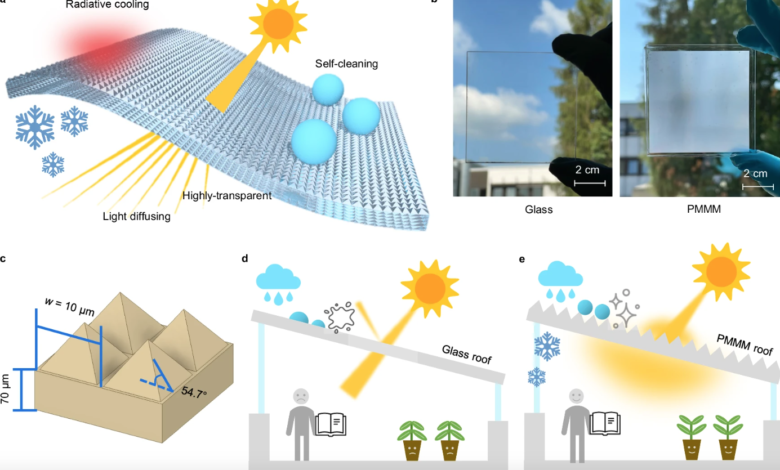How to fight the heat in the house with transparent metamaterial

Fighting the heat at home in a passive way
In recent years the use of transparent roofs and walls in buildings has gained much attention as a solution to make the most of natural light, reduce energy consumption and improve the well-being of the occupants. It is a pity that, in the face of undeniable advantages, there are also obvious “cons” linked to the inherent limitations of this approach. Starting from the excessive accumulation of heat inside the building during the summer months. How to fight the heat in the house, then, while making the most of natural light? In the car comes the new transparent and multifunctional metamaterial of the Karlsruhe Institute of Technology (KIT) that, in the not-too-distant future, could replace the glass components in construction.
The multifunctional transparent metamaterial
The field of research is that of optical metamaterials, artificial composite materials, usually periodically nanostructured on a scale of secondary wavelengths to have properties not easily visible.
Within the KIT, scientists at the Institute for Microstructure Technology and colleagues at the Light Technology Institute developed a polymer-based metamaterial with microscopic pyramidal surface structures. This particular design is the key to the multiple functions of the compound. In practice, it allows the integration of light diffusion, self-cleaning and radiative cooling (a passive cooling strategy with which the heat is “shipped” into space during the night as infrared radiation).
“A key feature is the ability to efficiently radiate heat through the long wave infrared transmission window of the Earth’s atmosphere, releasing heat into the cold expanse of the universe. This allows passive cooling without electricity consumption”, explains Professor Bryce S. Richards of the KIT.
The field of research is that of optical metamaterials, artificial composite materials, usually periodically nanostructured on a scale of secondary wavelengths to have properties not easily visible.
Within the KIT, scientists at the Institute for Microstructure Technology and colleagues at the Light Technology Institute developed a polymer-based metamaterial with microscopic pyramidal surface structures. This particular design is the key to the multiple functions of the compound. In practice, in fact, it allows the integration of light diffusion, self-cleaning and radiative cooling (a passive cooling strategy with which the heat is “shipped” into space during the night as infrared radiation).
“A key feature is the ability to efficiently radiate heat through the long wave infrared transmission window of the Earth’s atmosphere, releasing heat into the cold expanse of the universe. This allows passive cooling without electricity consumption“, explains Professor Bryce S. Richards of the KIT.
The cooling effect and light transmission
But can it help to combat the heat in the house? According to the team tests, the new polymer metamaterial resulted in a cooling of 6 ºC concerning the ambient temperature, while showing high transparency (or spectral transmittance). In detail, thanks to the small surface pyramids, it boasts excellent diffusion of sunlight, minimizing reflection losses, for a final transparency of 95% to visible light. By way of comparison the classic glass – explain scientists – offers 4 percentage points less. At the same time the surface scatters 73% of incoming sunlight, presenting a blurry appearance. In other words, if applied to roofs and walls of buildings, it would allow to make the most of natural light while safeguarding the privacy of users.
But applications would not be limited to residential or office properties. “In greenhouses, high light transmission could increase plant yields because the photosynthesis efficiency is estimated to be 9% higher than in glass-roofed greenhouses,” says Gan Huang, leader of the Institute for Microstructure Technology group.
Autopulizia
Not only that. The design gives the transparent metamaterial a very useful function: self-cleaning. In case of rain, the micro pyramidal matrix can “lift” the water droplets, conferring superhydrophobic properties, similar to those of lotus leaves. The process removes dirt and dust deposited making the compound easy to maintain and durable.
“The material – says Huang – can simultaneously optimize the use of sunlight indoors, provide passive cooling and reduce dependence on air conditioning. The solution is scalable and can be seamlessly integrated into building construction plans and environmentally friendly urban development“.
The research was published in Nature Communications.





